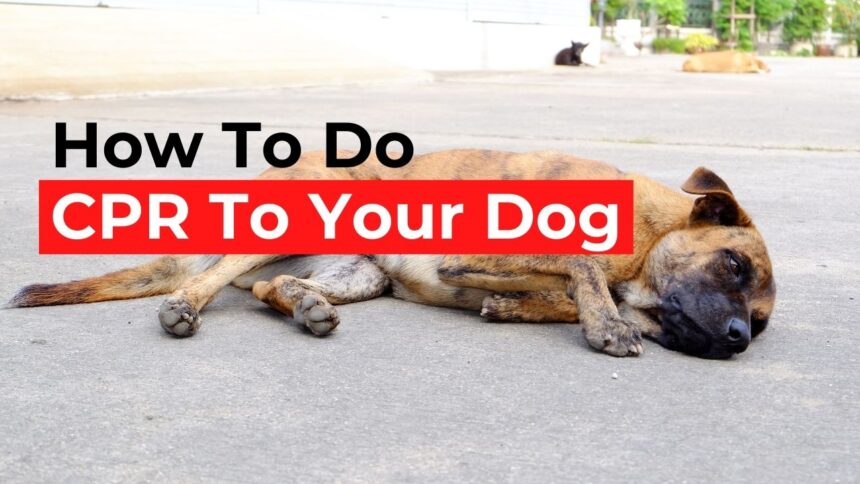How To Do CPR To Your Dog

I have been teaching CPR to humans for over 30 years. And in almost every class over the years I get one similar question. Can I perform CPR to my dog? The answer is yes. So today I will go over the steps necessary to perform CPR to your dog.
To begin, CPR to dogs is very similar to humans. The first step is to make sure the scene is safe. Then check for breathing by watching the rise and fall of the dog’s chest. If the dog has collapsed but is breathing, do not begin CPR. If they are breathing it means your pet also has a heartbeat.
If they are not breathing, you can check for a pulse by lifting their hind leg and placing your fingers where the inside of the leg and body meet (you should locate your dog’s pulse in advance of an emergency, so you know what it feels like).
If they have a pulse you are going to perform rescue breaths only. Before delivering breaths make sure the dogs airway (mouth) is clear. Remove any debris. Make sure the dog’s tongue is pulled forward. Then rescue breaths can be done by holding the dogs mouth closed firmly with both hands to prevent air escaping while you blow hard enough into the nose (mouth to snout) to make the dogs chest rise. Make sure you straighten out the dog’sairway, so it is a straight shot into the lungs. Deliver one breath every 2-3 seconds.
If they do not have a pulse, you must also do compressions. Place the dog on their right side. Pull the dogs front top leg back. Where the dogs elbow touches their chest is where you will place your hands for compressions. Just like with humans you will deliver 30 compressions at a rate of 100-120 per minute. Continue performing 30 compressions to 2 breaths for 2 minutes and then re-check to see if the situation has improved.
If you have a small dog (under 30 lbs.) you will perform compressions differently. Place your hands around the dogs’ rib cage with your thumbs on their breastbone. You will compress 1/3 of the chest 30 times with your thumbs at a similar rate of 100-120 times per minute.
Hope this helps.



Comments are closed.